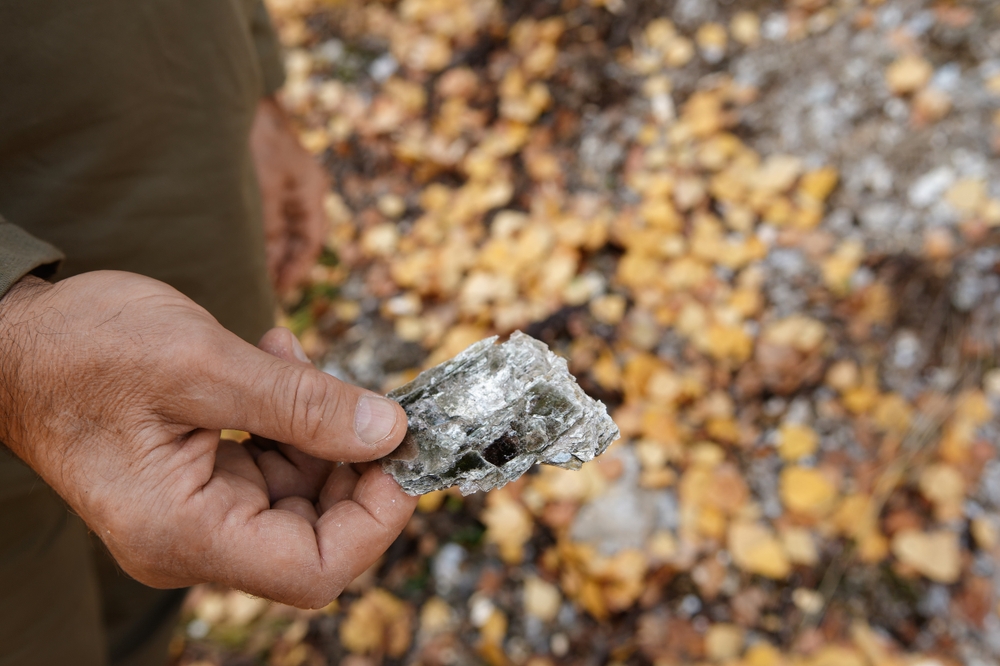
Why is silicate mineral used as a thermal insulator?
To answer why silicate mineral is used as a thermal insulator, we should first take a step back and dive into exactly what silicate minerals are. Silicate minerals are made up of silicate groups, and play major roles in the formation of rocks within the Earth. These minerals are actually the largest class of minerals, making up approximately 90% of the Earth’s crust. Silica, SiO2, is found naturally as the mineral quartz and its polymorphs which allow it to crystallise into different crystalline forms. These different forms represent a wide range of combinations, as various silicate minerals occur as the result of different processes taking place over billions of years.
The anions in silicate minerals predominantly consist of silicon and oxygen atoms, and these anions are used to determine the major silicate mineral groups. These groups include Nesosilicates, Sorosilicates, Cyclosilicates, Tectosilicates and our focus for this article, Phyllosilicates. Formed by sheets of silicate tetrahedra, phyllosilicates are highly abundant and include the likes of clay minerals, serpentine, chlorite and mica.
Mica is the key component within many of our high temperature insulation products and solutions at Elmelin. It has a variety of beneficial physical and chemical properties that make it ideal for insulation, and over the years we have continued to develop highly effective mica-based insulation solutions for a range of industrial applications. So, when considering why silicate minerals are used as a thermal insulator, our experience and expertise with mica will be used as a prime example.
About mica
Mica forms in sheet-like layers as a result of the hexagonal arrangement of its atoms. It is described as having perfect basal cleavage which essentially means that the individual mica crystals can be split into extremely thin sheets by applying stress in a controlled and measured manner. The mica sheets produced have many notable properties including being chemically inert, dielectric, elastic, flexible and lightweight.
Two of the most important properties of mica for insulation are its heat-resistance and inability to conduct electricity. Its versatility then further solidifies mica as being an excellent choice for high temperature thermal insulation. The two types of mica used for industrial applications are muscovite and phlogopite. Muscovite often has a white colouration and is recognised as being the most suitable for electrical applications due its superior dielectric strength. Phlogopite mica on the other hand is commonly green, and due to being softer than mica, it is used in applications where flexibility is important.
Mica is sourced from mining, predominantly in China and India. It is extracted carefully due to the risk of damaging the crystals, using small explosive charges that aim to shake the mica loose from the surrounding rock. These crystalline splittings are then processed into various forms and products, with the mica being used in the automotive and foundry industries often being kept in sheet-like form.
Silicate mineral as a thermal insulator
Why is silicate mineral, in this case Mica, used as a thermal insulator? As previously mentioned, mica has highly beneficial properties that make it ideal for thermal insulation. The first of these is phlogopite mica’s ability to withstand temperatures up to 1000°C and therefore able to cope with the temperatures being reached in furnaces and in the event of electric vehicle battery malfunction or thermal runaway. Furthermore, mica is non-combustible and non-flammable, making it excellent for slowing down heat transfer and minimising the effects of fire.
Mica is also excellent for electrical applications due to being a dielectric and therefore a poor conductor of electricity. Its superior dielectric capabilities are maintained even at high temperatures. Muscovite mica is more commonly used for electrical insulation because of its higher dielectric strength of 2000V per mm, compared to phlogopite mica’s 1500V per mm. It is typically used in capacitors for high frequency and radio frequency.
While its thermal resistance and dielectric strength are the two key properties of mica for industrial insulation, there are also a handful of others that have great implications for its applicable potential. Mica’s perfect basal cleavage, sectility and elastic tenacity all result in mica being easy to manipulate into the required shapes and sizes via cutting, stamping and punching. Furthermore, the thin sheets are lightweight which means the mica insulation products are often easy from a logistical perspective, as well as their installation and maintenance.
As well as being flexible, mica is also durable, which is another highly important characteristic when being used for thermal insulation. The elastic tenacity of mica allows it to withstand large amounts of pressure and stress. Due to the favourable physical properties of mica, it is ideal for long-term insulation solutions. The applications that our mica-based solutions are used in are often being operated for long periods of time everyday, whether its furnaces in foundries or electric vehicle batteries.
Conclusion
When considering why silicate mineral is used as a thermal insulator, the physical and chemical properties of these mineral groups are the answer, and mica is a prime example. Mica has multiple properties that make it ideal for high temperature insulation; it is chemically inert, dielectric, flexible and durable. These are properties that allow for effective, long-term solutions and it’s the reason that mica is core to so many of our products and solutions.
If you would like to find out more about the work we do using mica, and how our products and solutions could help you, get in touch here.
